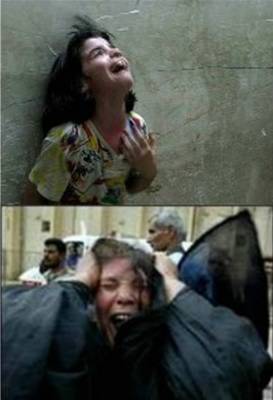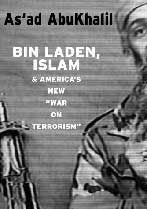"Anderson also tells us U.S. airstrikes prompted “Hassan Nasrallah, the group’s leader, to warn of retaliatory strikes if America continues to infringe upon the territory it holds in the country.” This is completely incorrect…Nasrallah never warned of any “retaliatory strikes” against the U.S. The citation she uses comes from the Lebanese website NaharNet from June 7th (Nasrallah had spoken on the 25th of May, 14 days prior to the airstrike and cited article, and on the 24th of June, 17 days after the cited article Anderson is basing her claim on) which in turn copied the story from AP, claiming “Hizbullah-Linked Media Threaten Strikes on U.S. in Syria over ‘Red Lines’”
This is one of three minor points I concede have merit. Like the others, it was simple human error — I confused two links, that of Nasrallah’s speech and the one describing Hezbollah media threatening retaliatory strikes. A correction has already been issued.
Anderson then informs us that one of the Hezbollah commanders she interviewed bears the rank of “Lieutenant”. There is no lieutenant ranking in Hezbollah. Hezbollah is not a conventional army, and these ranks with their military significances do not exist among its troops.
In my original draft, I clarified that this man had the approximate rank of lieutenant. Hezbollah does not have that rank, as I well know, but this man was just below a commander and acted as his right-hand man, so I used that term — with the clarification that Hezbollah has no such rank. That did not make it into the final version.
In the same paragraph, Anderson tells us “Hezbollah’s casualties ranged from 49 to 300” during the 2006 July War. The first number comes from a cited BBC article on the 25th of July, only 13 days into the war. How is Anderson using an article written 20 days before the end of the war to give a total estimate of Hezbollah’s causalities? More ridiculously, the article doesn’t even mention the number 49 once, instead, the article says, “Hezbollah said 27 of its fighters had been killed as of Monday”. The second number, 300, uses this link as a citation, which takes you to a 404 error page on The Australian.
This was another error with links that somehow made it through edits. It has been fixed and a correction issued.
Anderson quotes an alleged fighter saying: “Especially after the experience we’ve gained in Syria. A boy who was 18 years old and went to fight in Syria — now, he is 25.” Hezbollah went to Syria in 2013, unless Anderson and her editors believe Hezbollah fighters age quicker than your average human being, this fighter should be 22 now.
As Kourani notes, I was quoting someone. I couldn’t change the quote, even if the math didn’t add up. I think the gist of what he was saying came across regardless.The ‘commander’ continues: “We were keeping our Borkan-1 missiles as a secret weapon to use against the Israelis, but then we had to use them in Syria, and now the Israelis know we have them”…The Burkan-1, with a range of more than 800 km, was not designed by Hezbollah, nor has it been used in Syria by any groups, to date…What Hezbollah developed and uses in Syria is the Burkan Dwarf Missile (known as the Burkan), first used in Qusayr and Qalamoun battles, which the Syrian Arab Army now uses too.
This was the last error that made it past edits. It has been corrected."








